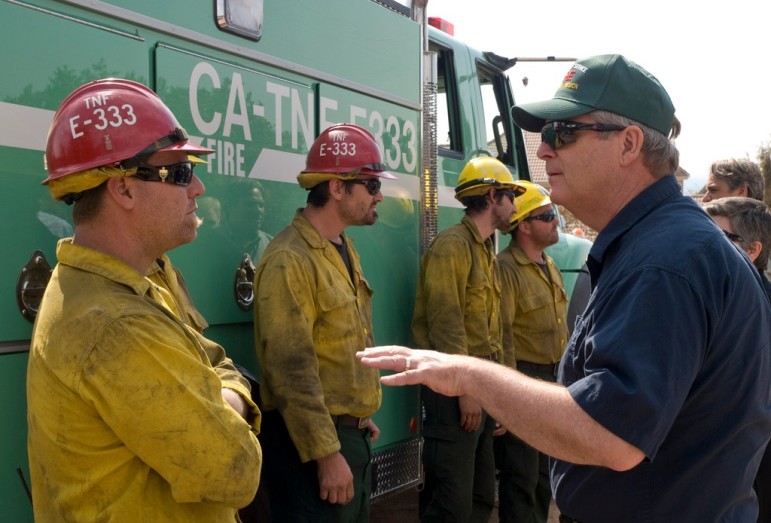
Secretary of Agriculture Tom Vilsack addressed the 2015 National Rural Assembly, but didn’t deliver a stock speech. Choosing instead to simply answer questions, Vilsack fielded one on philanthropy—pitched, oddly, about how foundations can help the USDA better measure its investments—and stunned the audience.
Secretary Vilsack characterized his interactions with foundations as one of the “frustrations” he has had in office. We will hazard a reasonable guess that he might have included in that frustration the 2011 memorandum of understanding signed by the Department and the Council on Foundations meant “to provide new sources of capital, new job opportunities, workforce investment strategies, and identification of additional resources that can be used to spur economic growth in rural America.”
Vilsack confirmed what we all knew to be true: Rather than an increase in foundation investment, “tragically,” he bemoaned, “we’ve seen a decrease.” Vilsack might have assumed that an MOU signed with the foundation sector’s trade association, following his speech at the third and final COF conference on rural philanthropy, might have produced a jolt of energy among grantmakers to respond to rural needs. It didn’t happen.
The secretary added that the need from foundations isn’t just their grantmaking, but their ability to invest capital in rural communities. He didn’t specifically cite Program Related Investments or Mission Related Investments, but that’s the money that could be coming from the 95 percent of foundation assets that aren’t devoted to their 5 percent grantmaking (plus admin) budgets.
For all the hype from the philanthropic sector of what it has been doing to respond to critical social needs, including partnerships with government agencies, Vilsack’s revelations might be taken as embarrassing the structure of institutional philanthropy. It’s nice to have rural philanthropy conferences in response to calls for more rural philanthropy—COF held three, in Missoula, Little Rock, and Kansas City—and issue glossy reports of the good things that foundations do in rural, but that only goes so far. When a deal is cut with the foundation sector’s trade association with the obvious purpose of increasing foundations’ rural investment and the results are actually negative, that should be a wake-up call for foundations—and their nonprofit partners.
Sign up for our free newsletters
Subscribe to NPQ's newsletters to have our top stories delivered directly to your inbox.
By signing up, you agree to our privacy policy and terms of use, and to receive messages from NPQ and our partners.
Words are cheap. It’s easy to make pleasant, hollow noises about rural with little or no substantive grantmaking or other asset investment behind them. Since the USDA/COF MOU, mechanisms for increasing rural philanthropic grantmaking such as the Rural Development Funders Collaborative have also gone out of business. A panel of grantmakers who preceded Secretary Vilsack’s speech, including Justin Maxson, president of the Mary Reynolds Babcock Foundation, Kathy Annette, president of the Blandin Foundation, Heeten Kalan, a senior program officer with the New World Foundation, and Jamie Bennett of ArtPlace America were at a loss to name the rural philanthropy venue where funders could push for more attention to rural.
Bob Reeder, a program director for Rural LISC who heard the secretary’s comments about philanthropy, expressed “surprise” at how “unabashed” Vilsack was, the sentiment of many participants at the National Rural Assembly. Blandin’s Kathy Annette added to that a feeling of disappointment that her peers in the foundation community seemed not to have heard “the compelling message [Vilsack] was giving,” especially since “he’s a great messenger with a great message.”
Nonetheless, having heard a panel of foundation grantmakers discuss how philanthropy has failed rural America, the information about foundations wasn’t new, but the source of the message, a federal government cabinet secretary, was unique. Dee Davis, the founder of the Center for Rural Strategies and the chair of the National Rural Assembly steering committee, described the importance of the Vilsack statement: “I think the Secretary has a lot of hope for rural America and he has an ambitious agenda, and I think he’s tired of seeing philanthropy play such a negligible role. […] The Secretary seemed discouraged that philanthropy keeps pulling back in to their own area codes.”
“The Department of Agriculture has tried several ways to engage the philanthropic community…and what I heard today was his frustration,” Davis added. “When he calls out their lack of effort, that’s not like one nonprofit complaining because it didn’t get funded. That’s an important part of the United States government asking, why did this happen? […] Having a cabinet secretary call out philanthropy is categorically different.”
The time is coming to an end for the Obama administration and Vilsack’s likely tenure in his position. It would be “tragic,” as Vilsack himself intimated, if the foundation sector were one of the shortcomings of his time as Secretary of Agriculture. As the grantmakers panel noted before the Vilsack Q&A, there is financial capacity among foundations that hasn’t adequately been leveraged by government agencies. Though the time for Secretary Vilsack may be over, it would be fitting for philanthropy to reverse course, get serious about ensuring increased revenues go to foundations, and become the trustworthy partner with the government sector that foundation leaders have always said they were prepared to be. In that case, Vilsack’s successor wouldn’t have to call out foundations for their lack of responsiveness to rural needs and rural opportunities.—Rick Cohen











